The curious case of Kumquats
We started spotting these curious little fruits every now and then a few years back. Always made a note to check what are these things and how to eat them.
Then this year they started turning up consistently in late winter and early spring and we started spotting them every week sitting next to the mandarin oranges and tangerines.
They are bright orange in color, almost like an orange but they are the size if the grape. Remembering our friend Amit who is king of puns, i would poke my wife every time we passed the aisle saying Amit will make a pun related to Kumquat as they are named that because they are “Kamkuwat” marathi word for weak. And we walked away guilt ridden for making fun of the Kumquat having never eaten one in our lives. Then we started noticing more bias against the fruit with people throwing around an urban slang on social media as “Dont be a Kumquat”! We decided to repent and next time brought a few home.
Tasting Time
We brought it home and again stared at it, “what are you!”. We had no clue how to eat it. We searched online and realized we have to eat it whole. My wife watched me suspiciously as i did. They were great! Popped them in like a grape. The skin was actually sweet and the pulp was very sour. More sour than an orange but not as sour as lime. There were a couple of seeds. The next ones we cut in half, de-seeded and popped them in the mouth. It was necessary after all the fun this little darling of a fruit was subjected to we try to do it some justice. Started thinking about recipe ideas. Salads – yes for sure. But then the sweet skin started compelling us into a new direction.
God Limbu Lonche (indian pickle)
In Pune my grandma would make indian pickles. Generally these are on the hotter side but she made one with lemons/limbu (limes in US) which was on the sweeter side. We love eating it with short grained sticky rice with ghee and metkut which we have delved into in our metkut tup couscous post. Its sweet, hot and lemony and goes perfect with varan bhat (simply cooked and mashed lentils with steaming rice). A few decades ago these pickles were made only in season, and only made in homes. So when our house jar/s would run out in winter i would make my displeasure known to mom and grandma. I would demand that a new one be made immediately. They would tell me, but it takes time, it needs the summer heat and it needs the right lemons. They always made their pickles by sealing them in jars and cooking them in sunlight which is in abundance in pune summers. The limes they talked about needed to be thin skinned, with sweeter ripe pulp and juicy. Thicker skin means more rind and bitter lemons. Now pickles are cooked more quickly, and lemons available throughout the year are used and these pickles are a small scale industry. My mom makes a small batch still, but in winter when it runs out her argument is that might as well get the store bought one.
Getting out of a pickle with Kumquat
So this problem about bitter skin when limes have thick skin is actually a non problem with the kumquats. The skin is sweet and already edible even before pickling. The juicy part is actually already a desire sweetish tartness. Kumquat was born to stand up to the pickling and deliver. At least thats what we thought. So we tried! In this case by “We” i mean her, my wife did all the work 🙂
The Pickling of Kumquat
Wash the kumquats throughly as we will be pickling, its even more important. Start by cutting into halves. You could slice in halves vertically as well. Then de-seed.
Then coat with salt and kashmiri red chilli powder. Let it rest.
In a pan heat sugar to a syrup consistency and add the kumquats and cook on low for a few minutes. We used regular sugar but next time we will use muscovado unrefined sugar for deeper complexities in the sweet component. Let it call. Then fill in sanitized glass pickle jars and seal and let it rest for about 5 days. We added a squeeze of lime juice to freshen it up a bit as well.
This is what we would call a fresh pickle. Not the slow pickle our grandma’s would make. Those get really intense flavors and the fruit breaks down further. We also kept the flavors very clean because we wanted to see the kumquat effect. I believe mustard seeds can be added too but black ones might be overpowering. White mustard seeds and dried fenugreek seeds would work well. Also using rock salts or a mixture of salt crystals will also enhance flavors.
In about 5 days the pickle was ready and we transferred it to refrigerator. Will try it different ways but already tried it with some steamed vegetables with rice, ghee and some outstanding Metkut powder that Our friends Uday and Anwesha had given us.
The pickle is refreshing. The Kumquats work beautifully in the pickle. Even the pickle juices get a unique citrusy taste. The fruit itself bursts if tender juiciness and there is no hint of bitterness in skin. We will be definitely making it again as it is also very easy to make.
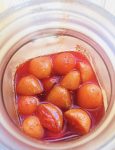
Kumquat Lonche (Sweet Pickle)
- Total Time: 15 mins
- Yield: 1 small jar 1x
Ingredients
- 2 cups Kumquats
- 0.25 cup Salt
- 0.25 cup red chili powder (kashmiri, else use less)
- 1 cup sugar
- 3 tsp lime juice/kumquat juice
Instructions
- Wash kamquats
- Dry thoroughly
- Cut in halves
- Mix with salt and cup kashmiri chilli.
- Adjust to taste. Rub on them.
- Meanwhile take one cup sugar and heat to melt till its hot.
- Add kumquats to that and boil for 4-5 mins.
- Add kamkuvat juice or limejuice 2-3 spoons to boiling syrup
- Let it cool
- Jar it in a sanitized clean glass jar and seal it when cold
- Prep Time: 10 mins
- Cook Time: 5 mins


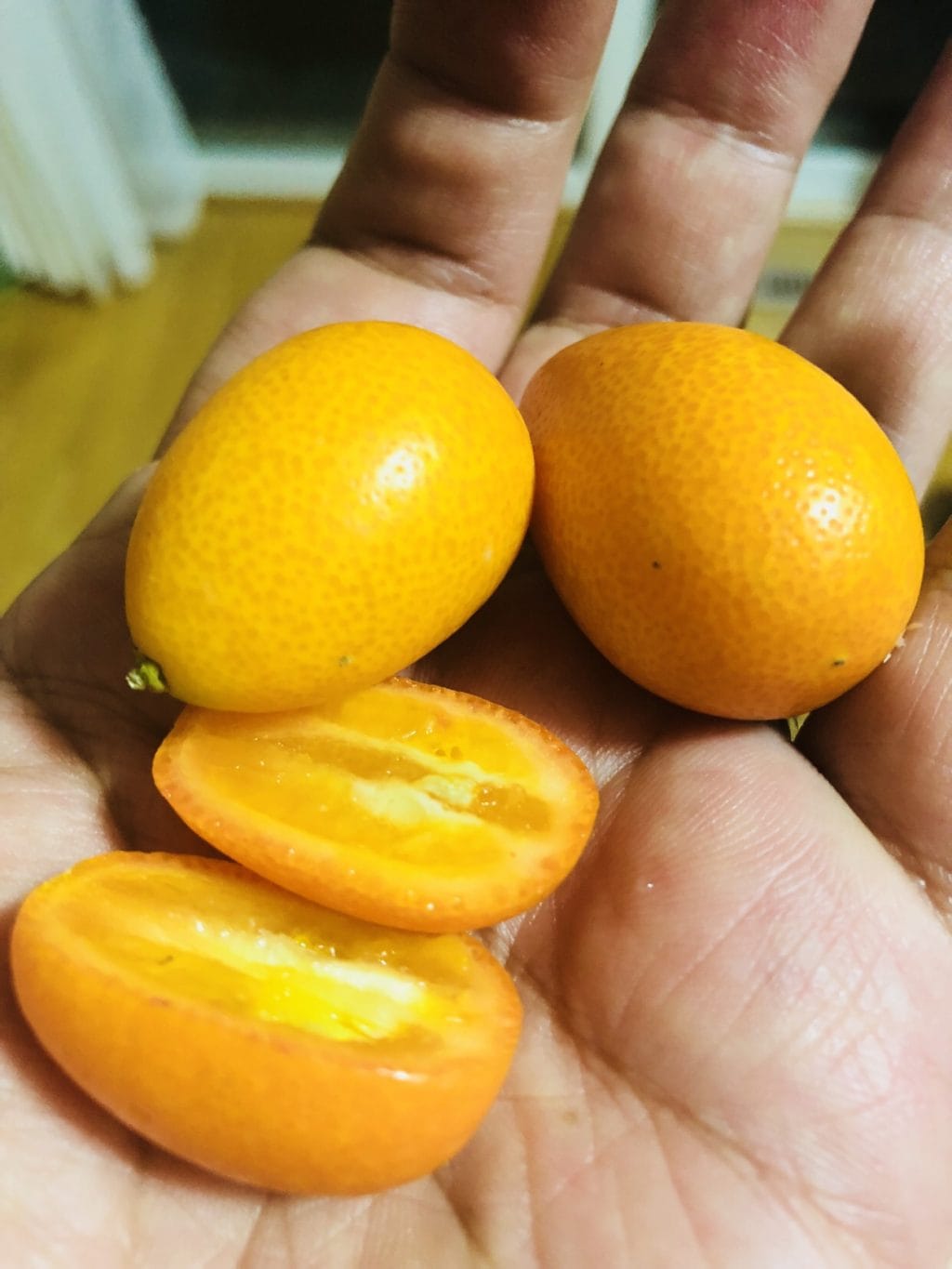
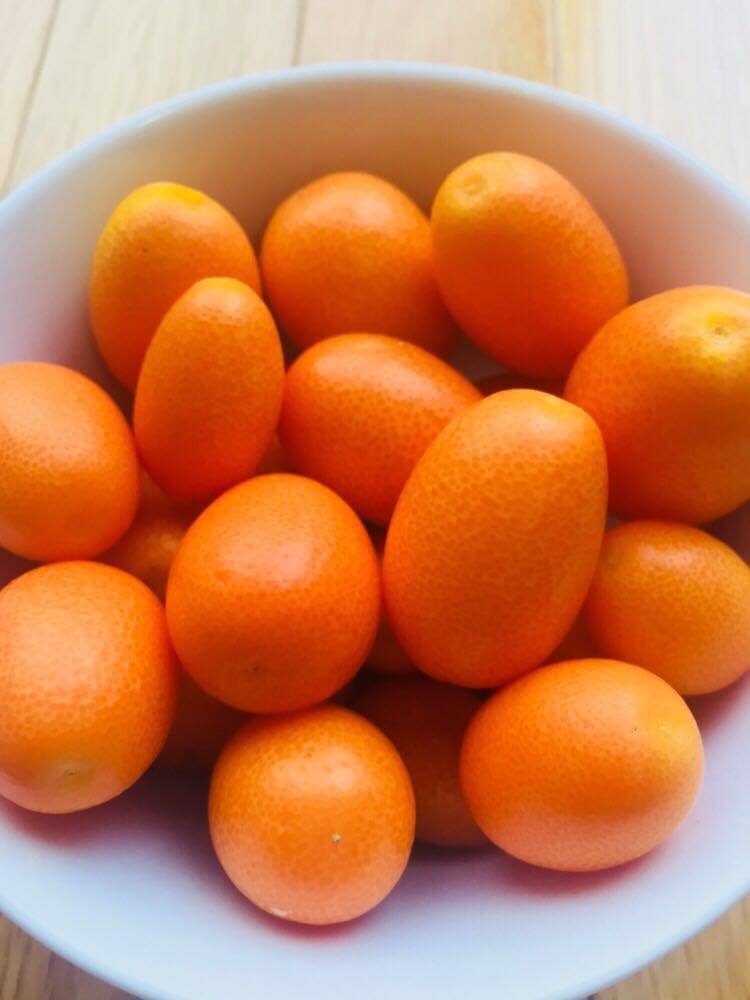

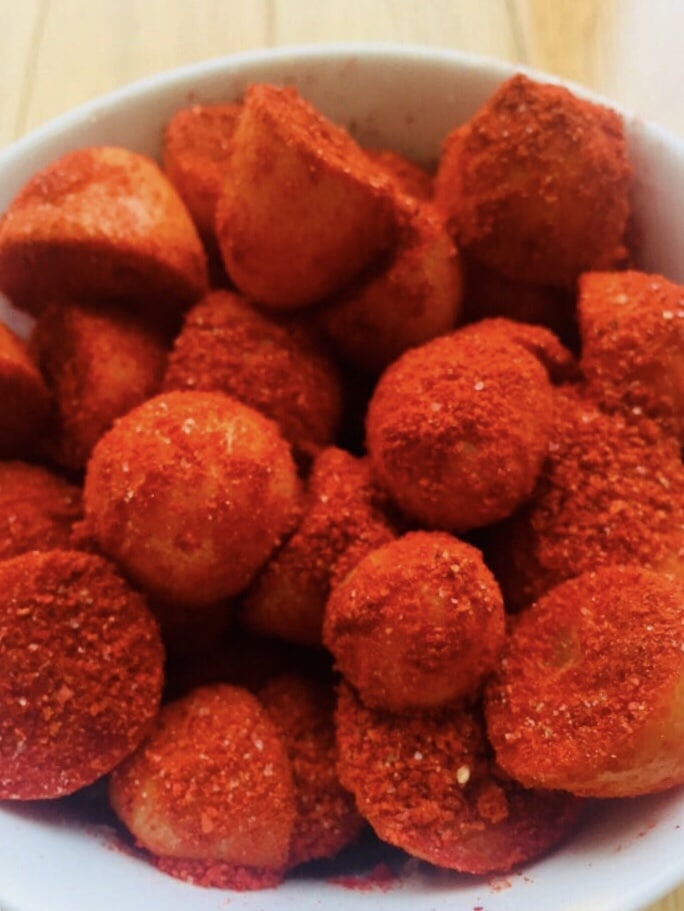
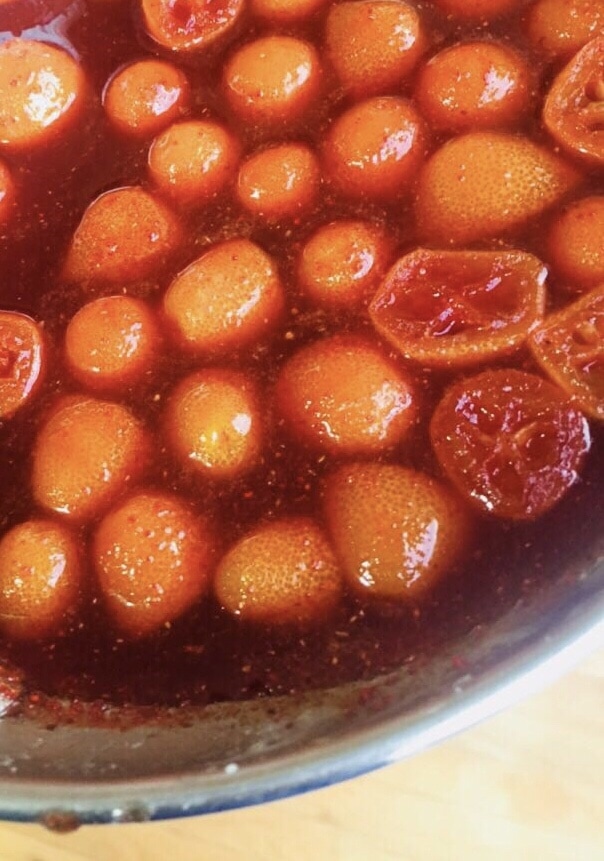
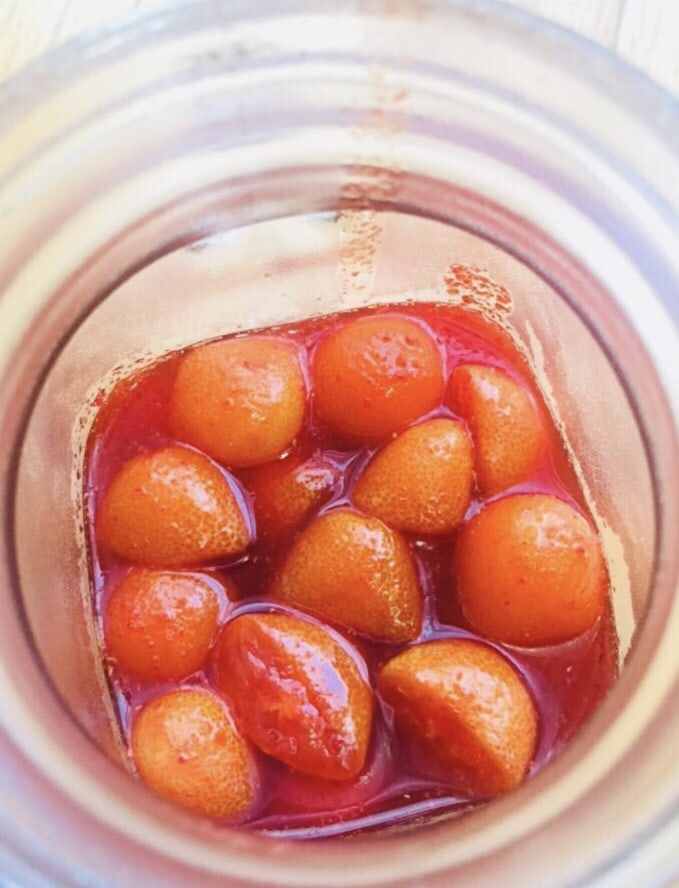
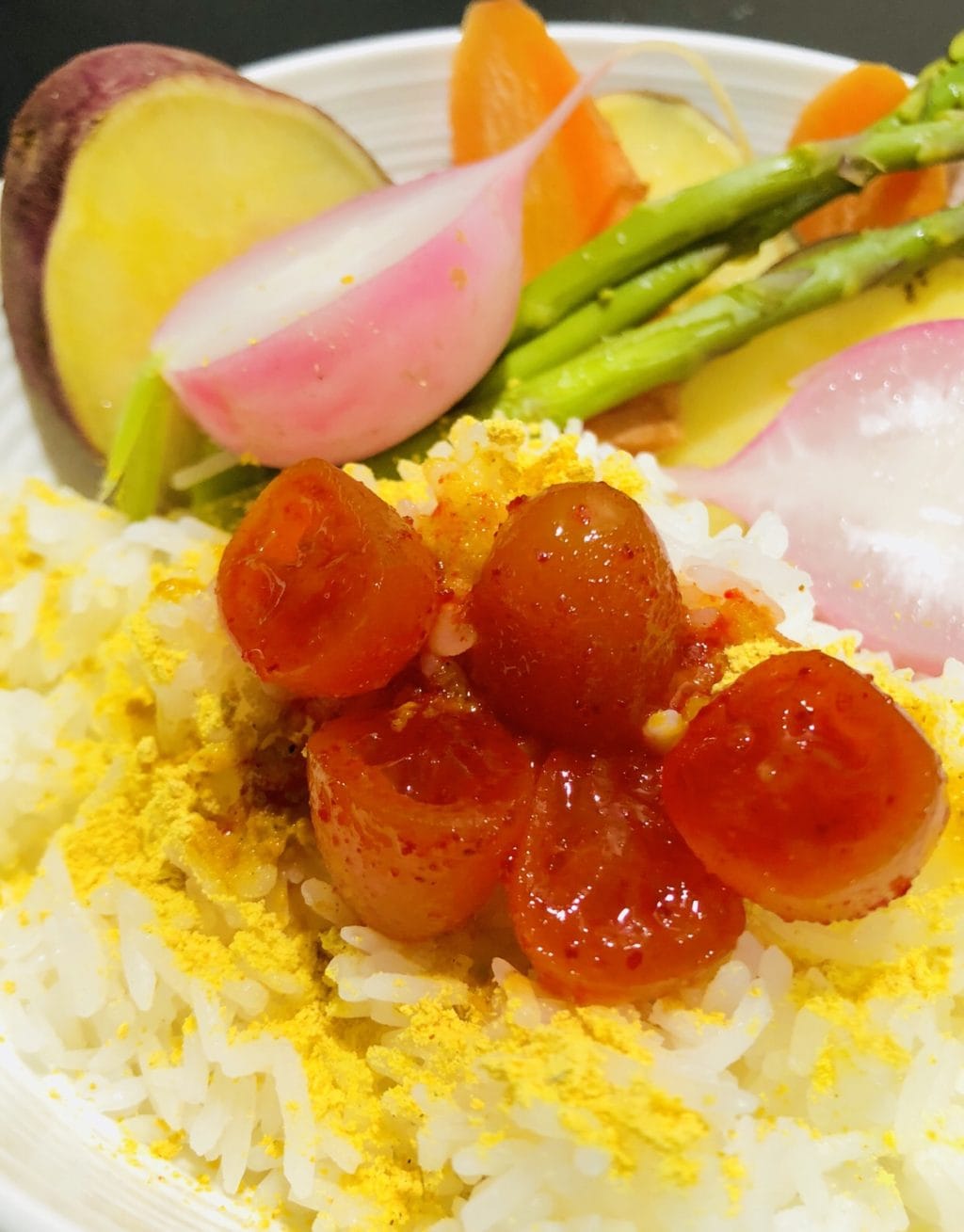
Must we boil the kumquats first
No they are cooked in the sugar and then little bit of their own juices. This is a quick short term pickle so this technique works.
Is the syrup made by just melting the sugar? No water?
I was wondering the same thing 🤷🏽♀️
Sorry for late reply. Yes the sugar is gently melted shaking the pan, just like process for making caramel. It is not cooked till point of making syrup but just to get the kumquats started when they are added. Adding water will require lot more cooking although there are long term pickle recipes that rely on this.